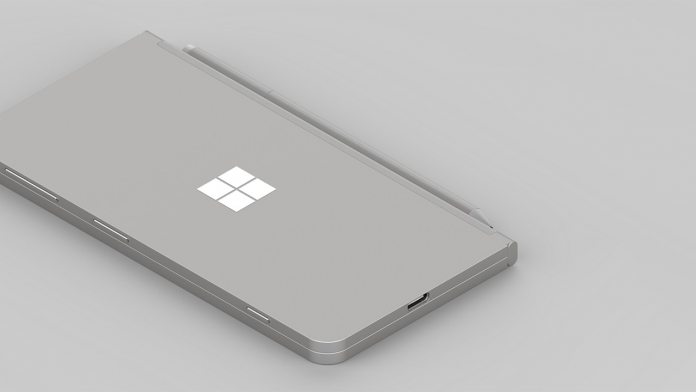Despite this, it’s still unclear if the phones will make it to market. Though the technology is almost there, there’s still the question of whether people would buy it. Microsoft’s latest patent seems to suggest so. Titled ‘Hinge with free-stop function’, it’s not a particularly entertaining piece, but it does contain some compelling arguments. “Along with these enhanced capabilities has come a demand for larger displays to provide a richer user experience. Mobile phone displays have increased in size to the point where they can now consume almost the entire viewing surface of a phone,” explained Microsoft. “To increase the size of displays any further would require an increase in the size of the phones themselves. This is not desirable, as users want their mobile phone to fit comfortably in their hand or in a shirt or pants pocket.”
The Software Argument
It’s the reason many don’t use tablets as their daily driver, and for professionals, the need for bigger screen space certainly holds true. However, the rise of foldables depends on software just as much as hardware. Customers are ready to try out a foldable, but they need something to do on it. The number of UWP apps is growing but still not there. Win32 apps may not be optimal for touchscreen and emulation could lead to performance issues. It’s almost certain that Microsoft will use the Windows platform in some way, so it’s hard to say how it will solve that issue. We know, at least, several ways to solve the hinge problem. The patent describes a 360-degree free-stop hinge that should allow for all the functionality users need. With it, they can fold it to protect the screens, with both facing outward. Importantly, it does so without protruding. “The hinges provide numerous advantages,” explains the patent. “Foremost, the flexible connection members stay within the channels of the hinge lugs and do not extend (or extend minimally) beyond the surface of the dual-display device as it is being rotated through 360 degrees. Moreover, the flexible connection members can be easily tightened, such as by turning a screw that is exposed externally with the dual-display device in a closed position. Moreover, the friction hinge can allow the device to free stop in any position through the 360-degree rotation. The hinge mechanisms and the friction hinges can be positioned adjacent to one another to provide both features simultaneously.” It could be an elegant solution to the usual gap problem, but it’s not certain that Microsoft will be able to take it all the way. With Samsung allegedly working on such a device, there’s going to be stiff competition. You can view the full patent here.




